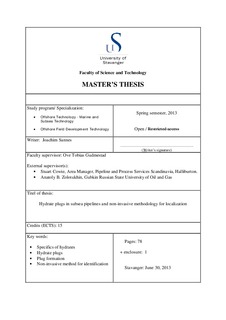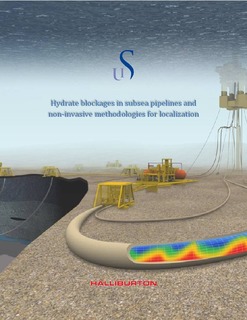| dc.description.abstract | With the growth in global energy demand and the lack of new shallow-water and onshore opportunities, there is growing emphasis on oil and gas production in deep-water environments. A particular challenge for flow assurance engineers is to ensure pipelines remain free from restrictions created during operation.
Hydrate plugging, in particular is, one of the major flow assurance challenge, and as oil and gas production moves into harsh and challenging environments, there is a growing challenge to prevent hydrate plug formation. The applicability and efficiency of remediation methods depend on locating an accumulation or plug, and novel techniques for accurate localization and remediation are greatly required. A reflected review of various techniques is discussed in an attempt to propose improvements.
The objective of this study is to carry out an interdisciplinary review to investigate whether any existing technology can be adopted to address the challenges of locating hydrate blockages in subsea pipelines. The challenge is complicated by the lack of methods to accurately detect hydrate plugs in subsea pipelines.
The safety and economic costs associated with pipeline blockages are compelling the industry to design an innovative means for effective and accurate localization of blockages in offshore pipelines. Here, we indicate the motivation for hydrate science and engineering; that is, the petroleum industries enormous need for solving the challenge of hydrates. This involves teams composed of, among others; physicists, chemists and biologists to understand hydrate origin, as well as teams composed of subsea specialists to develop inhibitory, locating and remediation techniques. In this thesis, emphasis is placed on the major applications of hydrate research: the nature of hydrates, how they occur in pipelines and remediation methods. An introduction of hydrate structures and properties is presented. Subsequently consequences and handling of hydrates in offshore pipelines is discussed.
After gaining an understanding of hydrate occurrence in subsea pipelines and having reviewed detection methods related to full hydrate blockages, the advantages and disadvantages of each have been considered. The research conducted indicates that non-invasive technologies exist for detecting full blockages and deposit profiling in liquid filled pipelines, however a more accurate method needs to be developed for locating a full blockage. In gas pipelines a method to both profile deposits within the pipeline and accurately locate a full blockage has yet to be developed. | no_NO |

